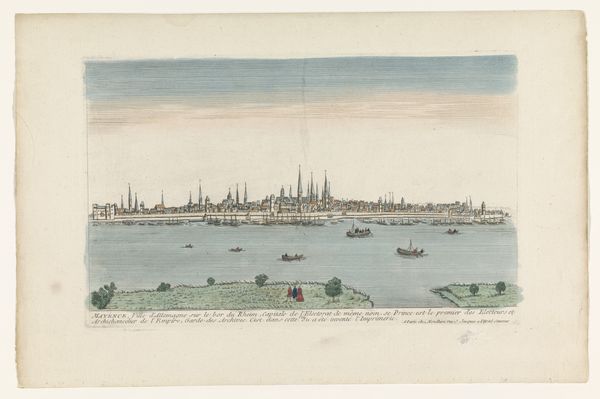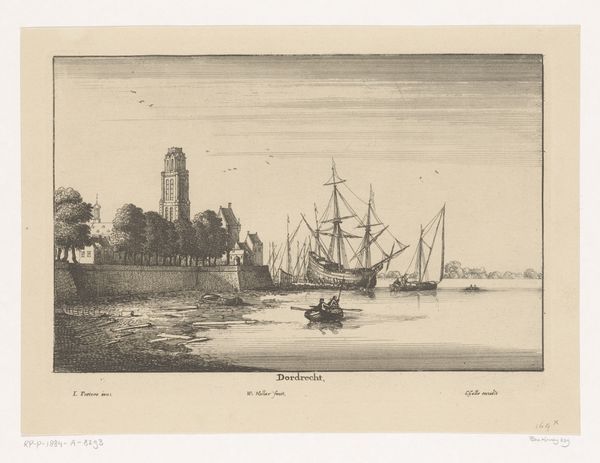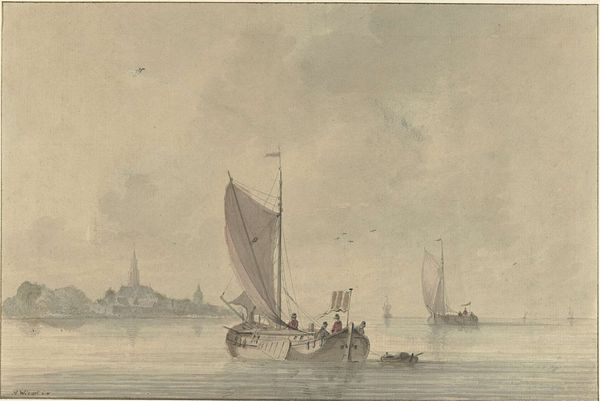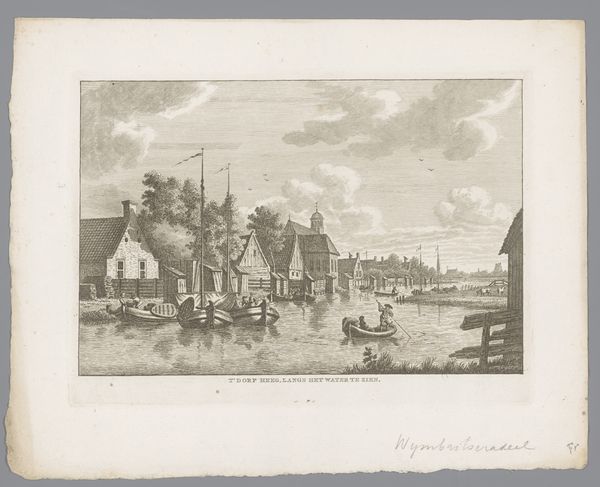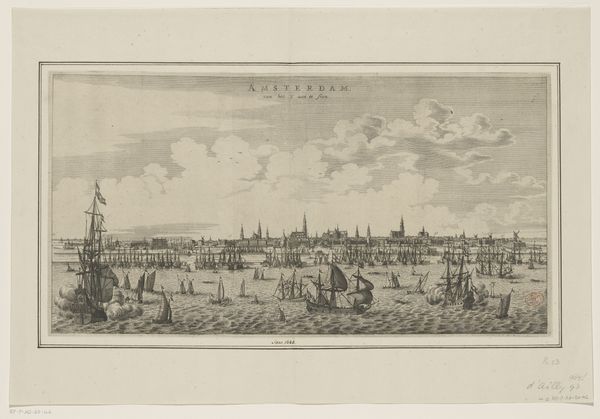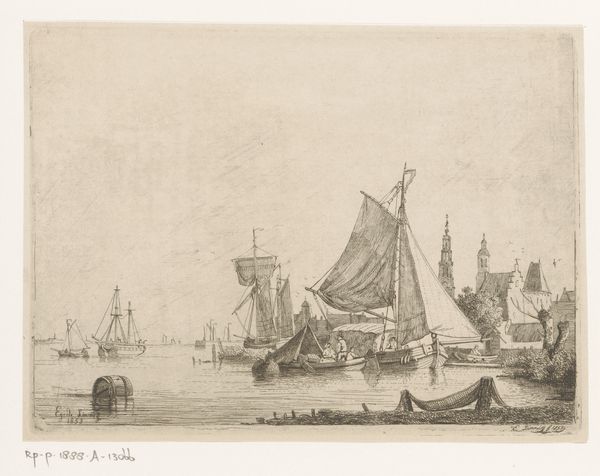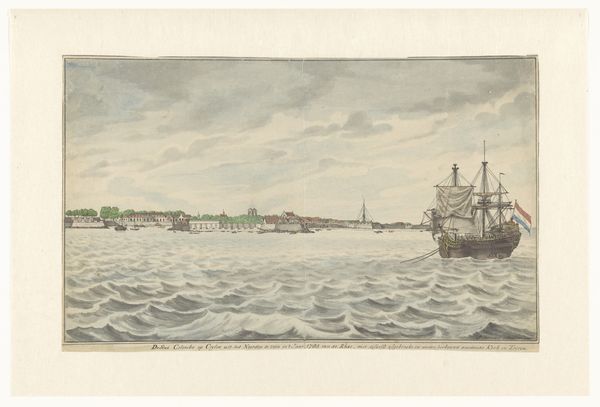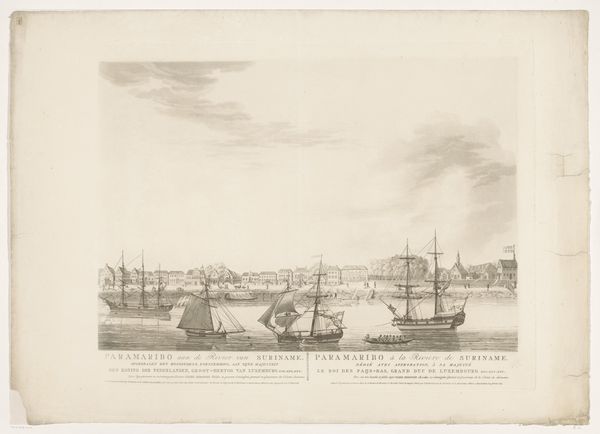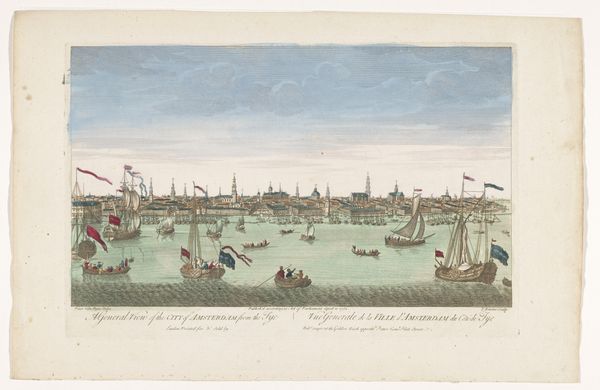
drawing, plein-air, watercolor
#
drawing
#
aged paper
#
water colours
#
dutch-golden-age
#
plein-air
#
landscape
#
watercolor
#
coloured pencil
#
cityscape
#
watercolour illustration
Dimensions: height 230 mm, width 370 mm
Copyright: Rijks Museum: Open Domain
Editor: So, here we have Jan Brandes' "De stad Schoonhooven aan de Rivier de Rhyn in Holland" from 1787, a watercolor and pencil drawing on what looks like aged paper. I’m struck by how the artist captures the quiet, everyday life along the river. What draws your eye in this piece? Curator: The clear depiction of the boats immediately interests me. Notice how much material detail is dedicated to rendering these vessels and the tools used for fishing. In a sense, Brandes foregrounds the material conditions and labor central to this riverside community. It asks us to consider the socio-economic activity as part of the Dutch landscape, as the windmills also are. What do you think? Editor: That's interesting. I hadn’t considered the focus on labor. So, you’re saying it’s not just about the pretty scenery, but also about the... making-of of this landscape? Curator: Exactly. This piece provides a glimpse into the materiality of 18th-century Dutch life. These are not heroic figures, just everyday people doing their jobs. We must consider how their activity, the very making and using of things, literally builds the scene we behold. It’s worth considering too the labour required to create the pigment and to make the drawing itself. Editor: It almost seems like a quiet rebellion against those grand landscape paintings from the Dutch Golden Age. Curator: Precisely! Instead of idealized landscapes for wealthy patrons, here’s a humbler perspective highlighting craft, materials, and human interaction with them. How different is that small boat compared to those of the Dutch East India Company? It provokes a certain re-evaluation, right? Editor: Yes, definitely. I’ll certainly think differently about landscapes now and how we take for granted their materials and means of production. Thank you! Curator: And I think your response perfectly articulates what it means to engage with art this way. Appreciating this is an entry point to acknowledging human action on every landscape.
Comments
No comments
Be the first to comment and join the conversation on the ultimate creative platform.
